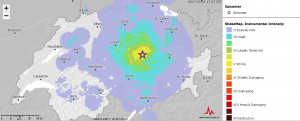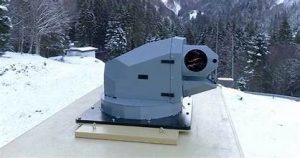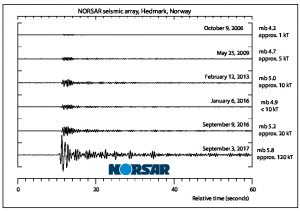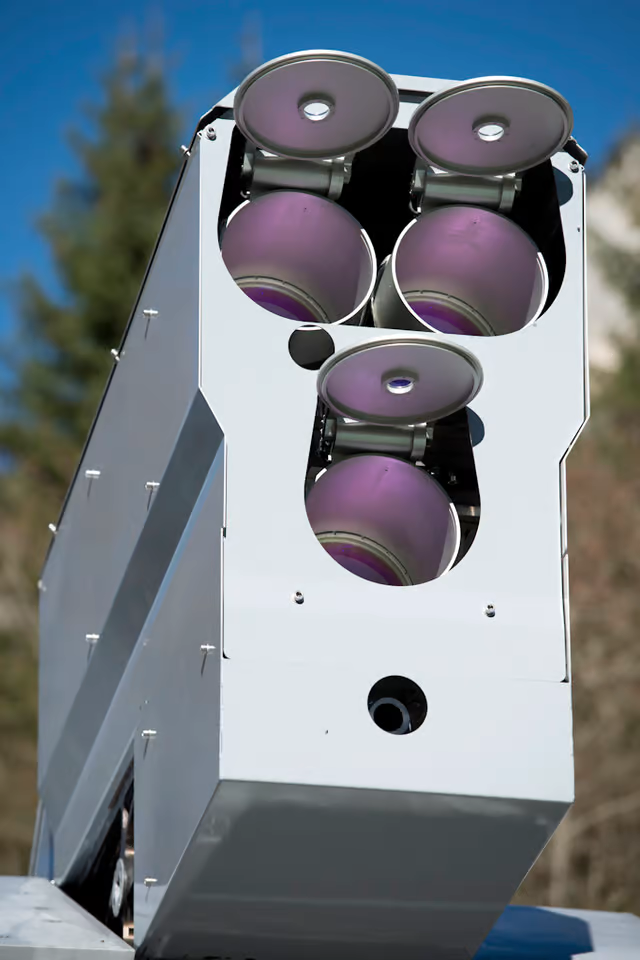Christoph Pfluger – intro by Peter Koenig

The magnitude of 4.4 on the Richter scale requires an explosive charge of at least 2500 tons of dynamite. The authorities see no reason for investigations.
Christoph Pfluger, Journalist, Chief Editor of the Swiss Weekly “Zeitpunkt”.
This is the link to the original article appearing in “Zeitpunkt”, in German: https://zeitpunkt.ch/erdbeben-rheinmetall-unteriberg-explosion
———
Introduction – Why is this alleged “earthquake” of 4.4. Richter Scale in neutral Switzerland, of importance?
Because it was likely not an earthquake but a strange explosion, on 4 June 2024, in the middle of the night (at 2:30 AM), on a test-site of German Weapons Manufacturer, Rheinmetall. According to the Swiss weekly “Weltwoche”, this explosion could have stemmed from an underground nuclear test.
Swiss Government as well as local authorities, despite multiple requests for sensible explanations, have, so far, remained silent on the issue.
If, indeed, Switzerland allows a German (NATO) weapons manufacturer to carry out nuclear tests in Switzerland, it might have severe consequences for Switzerland, in terms of her neutrality, non-NATO membership, and democratic rights to know of the Swiss population. The Swiss people are largely kept in the dark about the tests of foreign weapons manufacturers on neutralSwiss territories.
This should be brought to the attention of the Swiss public and national leaders around the world. Switzerland must foresee receding from her non-neutrality and western-bias, to adhering to her Constitution, and to become again worthy of being internationally trusted for potential conflict mediation.

The Event
On 4 June 2024, at 2:30 AM, an alleged earthquake measuring 4.4 on the Richter scale occurred on the test site of the Rheinmetall (weapon manufacturing) Defense Contractor in Unteriberg, Central Switzerland. The Swiss Seismological Service locates the epicenter at a depth of just 100 meters, and indicates the Pragel Pass, six kilometers away, as the epicenter.

Rheinmetall is a large German weapons manufacturer, based in Düsseldorf, and owned to about a third by US investors. Rheinmetall with its about 33,700 employees, is represented at 167 offices and production sites worldwide in 28 countries, including Switzerland.
On the crucial early morning of June 4, 2024, there was a loud bang and the windows of the nearby golf course restaurant shattered. Around 130 trace reports were received, the most distant one from 109 kilometers away. The earthquake service expected aftershocks in the following days and weeks; there were six of them, also on the Rheinmetall site, but at some distance from the original “tremor” site.
The Swiss weekly magazine «Weltwoche» took up the issue and raised the provocative question: “Did the defense company Rheinmetall cause an earthquake in Switzerland?” The question was whether the quake had a natural cause or whether it could have been triggered by an underground explosion at the test site.
The seismograms available to Weltwoche from various stations do not show the weak increase in the seismic signal that characterizes an earthquake.
The strength of the “explosion” must have been enormous. The newspaper “Weltwoche” even spoke of the possibility of a mini-nuke explosion, a nuclear weapon with less than 5 kilotons, and demanded clarification.
However, the Swiss Military / Defense Department has “no knowledge of such an incident”. They also claim having “no control over the activities of the [Swiss] weapons manufacturing industry”.
The Security Department of the Canton of Schwyz, where the incident happened, also sees “no indication that it was not an earthquake” and does not want to investigate the incident.
A supposed earthquake on the site of a weapons manufacturer of a NATO country [Germany] in neutral Switzerland that occurs at a depth of just 100 meters and begins with a loud bang! – Might be an interesting event, not to lose sight of.
Here are some questions and answers from a geophysical expert:
First, how can you tell the difference between an explosion and an earthquake from a seismogram – the recording of the tremors?
The expert produced three seismograms; one of the Norwegian seismological services NORSAR proving that North Korea had carried out underground nuclear tests; one from the earthquake in Elm, central Switzerland, that took place on 25 October 2020; and the one from Unteriberg on 4 June 2024.

Differentiated characteristics from the three seismograms are recognizable. An earthquake announces itself with a weaker primary wave and, in contrast to explosions, also shows smaller tremors immediately after the main quake.
In Conclusion – The 4 June event was most likely not an earthquake, but an explosion.
Second, how large must the explosive charge have been?
There are apparently empirical values from scientific literature. The so-called Semipalatinsk Formula – named after the nuclear test site in Kazakhstan – assigns an explosion of 4.4 Richter, to an explosive charge of 2.5 kilotons.
The analysis of numerous British nuclear tests results in an explosive charge of 2.5 to 9 kilotons for a tremor of this magnitude. The Norwegian seismic authority NORSAR arrives at a similar explosive mass estimate for the North Korean nuclear tests.

See this – https://h2tools.org/sites/default/files/2019-08/Review%20of%20Methods%20for%20Estimating%20the%20Overpressure%20and%20Impulse%20Resulting%20From%20a%20Hydrogen%20Explosion%20in%20a%20Confined-Obstructed%20Volume.pdf
In plain language: 2500 to 9000 tons of dynamite. That would require 125 to 450 lorries with 20 tons of dynamite each. However, such a convoy has never been sighted in the Unteriberg area, and there would probably be no room for it in Rheinmetall’s tunnels.
Consequence – An explosion yes, but not a conventional one.
It is not insignificant to note, that the Lakes Sihl and Wägital, both dam reservoirs, are only a few kilometers away from the Rheinmetall test site. In Switzerland, dams must withstand an earthquake that is estimated to occur only every ten thousand years. An earthquake of a magnitude 4.4 cannot damage them. Damage to normal buildings is only to be expected with a magnitude above 5 Richter.
Third, a nuclear explosion should produce radioactive fallout. Why has apparently nothing been detected?
Answer – In contrast to atmospheric nuclear tests, underground nuclear tests produce very low levels of radioactive fall-out, which mixes with the already existing atmospheric radioisotopes.
However, some of the radioactivity underground takes millions of years to decompose and, according to the «International Physicians for the Prevention of Nuclear War», can also contaminate groundwater.
The explosion of a mini-nuke in the mountains of central Switzerland – such a story is hard to believe. But even less credible is the official version of an earthquake on the test site of an international defense contractor, a “tremor” that is preceded by a huge bang and lacks the geophysical characteristics of an earthquake.
The authorities of the Canton of Schwyz are challenged. On the very day of the “earthquake”, the cantonal government published its answers to an interpellation by three members of the cantonal parliament on 13 questions.
The operating license for Rheinmetall’s test site on Ochsenboden [Switzerland], apparently goes back to a contract that the Canton of Schwyz concluded with the former [Swiss] Oerlikon-Bührle-Company in 1954 and which was revised in 1961 and 1967. In 1999, it was transferred to the Düsseldorf-based weapons manufacturing Rheinmetall group, which took over Bührle’s armaments division.
One of the interpellants’ questions concerns the transport of the obviously dangerous goods. Here the response from the cantonal government:
“The cantonal administration has no knowledge of where and how the goods are transported from, as it [Rheinmetall] is a company under private law. Any road transport must be carried out in accordance with the statutory safety regulations.”
There is no information on whether and how this is monitored.
Another question concerns environmental pollution, because of the tests with uranium ammunition that Bührle carried out in the 1960s. “Extensive investigations in 2001 and 2002 together with the Federal Office of Public Health, the SUVA (German acronym for Swiss Institute for Accident Insurance) and the Swiss Federal Technical University (ETH) in Lausanne“, according to the Schwyz Cantonal Government, revealed, “that no residues of depleted uranium from the shooting tests at that time could be found”.
Whether uranium ammunition was tested after 2002 or whether nuclear material was stored or tested on the test site, there are no details.
So, the story is by no means over.
For example, about the contract between the Schwyz Cantonal Government and Rheinmetall, it would be interesting to know, the duration and cancellation periods, as well as the nature of the weapons that may be tested on Rheinmetall’s test grounds.

After the alleged earthquake or, more probably, the explosion, the population has a right to unrestricted information.
On 26 July, Cantonal Councilor Adolf Fässler, from Unteriberg asked the Government Council of the Canton Schwyz, whether it was prepared to publish the full legal basis of the testing center, how compliance with the conditions would be checked, and whether this had ever been dealt with by a parliamentary commission.
The people of Unteriberg, the residents of the canton of Schwyz and the public at large, are eagerly awaiting the answer.
Sources (in German):
• Weltwoche: Hat der Rüstungskonzern Rheinmetall ein Erdbeben in der Schweiz verursacht? 19.6.2024
• Swissinfo: Neue Risiken: alternde Staudämme. 17.3.2022
• Sonnenseite: Die katastrophalen Folgen der Atomtests. 29.8.2023
• NZZ: Schiessplatz Ochsenboden als ungefährlich eingestuft. 23.1.2001
• Swissinfo: Nicht alle Staudämme in der Schweiz sind bei Erdbeben sicher. 8.4.2013
Peter Koenig is a geopolitical analyst and a former Senior Economist at the World Bank and the World Health Organization (WHO), where he worked for over 30 years around the world. He the author of Implosion – An Economic Thriller about War, Environmental Destruction and Corporate Greed; and co-author of Cynthia McKinney’s book “When China Sneezes: From the Coronavirus Lockdown to the Global Politico-Economic Crisis” (Clarity Press – November 1, 2020) Peter is a Research Associate of the Centre for Research on Globalization (CRG). He is also a non-resident Senior Fellow of the Chongyang Institute of Renmin University, Beijing.
Published by The 21st Century
The views expressed in this article are solely those of the author and do not necessarily reflect the opinions of 21cir.com
